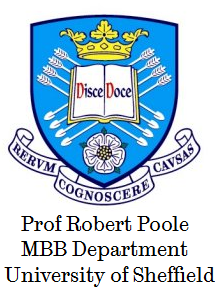Team:University of Sheffield
From 2008.igem.org
(Difference between revisions)
| Line 86: | Line 86: | ||
cheap water contamination sensor.</td> | cheap water contamination sensor.</td> | ||
</table> | </table> | ||
| - | |||
| - | |||
| - | |||
| - | |||
| - | |||
| - | |||
| - | |||
| - | |||
| - | |||
| - | |||
| - | |||
</html> | </html> | ||
| + | |||
| + | =Sponsors= | ||
| + | [[Image:ChELSI_Logo_small.png|thumb|left|100x100px|[http://smic.group.shef.ac.uk/04b_ChELSI.html ChELSI]]] | ||
| + | [[Image:Prof_Robert_Poole_logo.png|thumb|left|100x100px|[http://www.shef.ac.uk/mbb/staff/poole/poolelab.html Professor Robert Poole]]] | ||
| + | [[Image:Idtdna-logogif.gif|thumb|left|100x100px|[http://eu.idtdna.com/Home/Home.aspx IDT DNA]]] | ||
| + | |||
| + | [[Image:Biofusion_logo.png|thumb|left|100x100px|[http://www.fusionip.co.uk/ Fusion IP]]] | ||
| + | [[Image:IChemE.jpg|thumb|left|100x100px|[http://www.icheme.org/enetwork/MainFrameset.asp?AreaID=171 Institute of Chemical Engineering]]] | ||
| + | [[Image:Sheffield_union_logo.PNG|thumb|left|100x100px|[http://www.shef.ac.uk/union/ Sheffield University Union of Students]]] | ||
Revision as of 18:12, 14 October 2008


|

|

|

|

|

|
On a Mission for Luminescence...
| The aim of this year’s project is to engineer a biological machine which can sense cholera contamination in water, and rapidly test if water is potable. Technically, to achieve this easy way of testing water contamination the team is planning to apply quorum sensing. Quorum sensing bacteria have the ability to both secrete signaling molecules and receive them. When signaling molecule is present in the environment it binds to the receptor and activates a particular action within the organism.More. |

|
Abstract
| Expression of non-native receptor proteins in bacteria often involves extensive genetic modifications that can be difficult to carry out. One way of addressing this problem involves creating a fusion receptor protein consisting of the sensing part from the foreign species and the signal transmitting part native to the organism in which receptor is to be expressed. The fusion receptor we have designed consists of Vibrio Cholerae's sensing module fused to E.coli's signal conveyer. The receiver part of the receptor should bind to signaling molecules excreted by V.cholera and pass it downstream through signal transmitter to DNA. The expression of a reporter molecule will indicate water contamination. As a result, the fusion receptor could be utilised as the basis for a cheap water contamination sensor. |
 "
"

